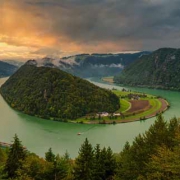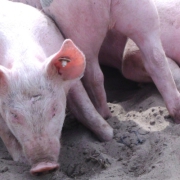Fukushima and why we cling on to ruins
It’s a bit late to write about Fukushima, don’t you agree? If this post were about Fukushima, it would be a bit late. But the issue I am putting my teeth in here is much larger.
Fukushima has become a symbol for deadly industries, for the nuclear holocaust, for the apparent fact that man cannot harness nature (I like to disagree here) and so many other things conventional wisdom wants us to believe. However, very few people associate Fukushima with what it should be related to in the first place.
Crooky management.
And this is extremely prevalent in the energy industry. Well, let’s say in energy especially so but in a more generalized sense, it’s prevalent in any place where huge immobilized installations are supposed to produce value for decades.
Why is that?
Big power plants (just like any other big installation) are generational stuff. This means that they are intended and built to last for the active life of a generation. And they must, as the capital exposure those installations represent is so big that it will take more than a decade of stable returns to pay for the cost of putting them in place.
Most such power plants or refineries are built for lifetimes of around 20 years or a little more. This means that in principle, once the economic lifetime of such an installation has expired, it must be trashed and either replaced by something new or refurbished.
Refurbishment can be a long, expensive, and arduous process as it often involves bringing an old plant to today’s standards in terms of safety and economic fitness – if this is done properly of course. However, many times a new build is cheaper and better. But there are incredible numbers of old plants around.
The real reason they run much longer is that those big plants were planned very conservatively. This means that if they had an original lifetime of 20 years, they likely last significantly longer.
What happens is that during the amortization period (the original 20 years for the sake of argument) the plant has a profit-reducing effect on the balance sheet. Loans have to be paid back, financings have to be unwound. This results in installments to kill the CAPEX.
Once the principal and interest have been fully repaid, the plant has a book value of a symbolic USD or EURO or whatever other currency one chooses. Without any further CAPEX installments to repay and a plant that essentially still functions, the plant becomes much more profitable.
In a perfect world, prudent managers would provision accounts for the time when the plant will either have to be extensively refurbished or decommissioned. But who is prudent in those quarterly report kinds of times?
Instead of building a cushion for future liabilities or a replacement, the manager responsible for the asset immediately considers the windfall profit as his gain. Those gains occurred under his watch so he declared them profits and paid extra high dividends to shareholders to be favorably considered at the next round of promotions.
One day, though, the plant will be too old to be operated in the same manner and it will not at all be safe anymore. But the company has already gotten addicted to the free money as it serves many other purposes that have often nothing to do with the plant operations itself. Pulling that profit out of the revenue projections is going to hurt as a new plant must be built or the old one expensively refurbished. This would wreak havoc on a system that is designed to maximize the glory of the Top Management.
Sometimes, just sometimes, such a plant is allowed to operate so incredibly long that an otherwise normal event of nature will make it default and it produces a disaster as the safety threshold for this old, decrepit facility is dismally low – and if this is then a nuclear installation, it’s especially galling.
We are riddled with stone old plants that do dangerous things and where security is dismal. They are not replaced as they should be after their normal lifetime and are a little bit on top.
Plants that have doubled their design life are a threat to our safety if they are not refurbished extensively. And they give their newer brethren a bad image as it is they who blow up, blow out, or do something else that is not good for human health and/or life and produces headlines.
Don’t trust the normal verification processes administrations provide to protect the public from criminal managers. Those dinosaur plants are still big and they provide lots of jobs. But they kill and we must ask ourselves if we like our lives or our jobs better.
Consider this the tip of the iceberg.


















Leave a Reply
Want to join the discussion?Feel free to contribute!